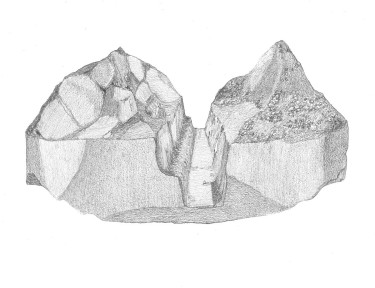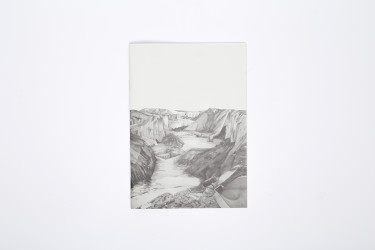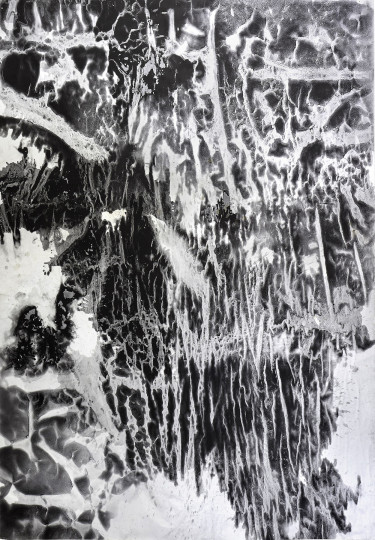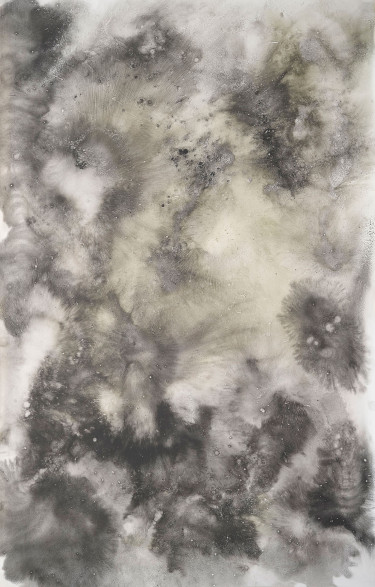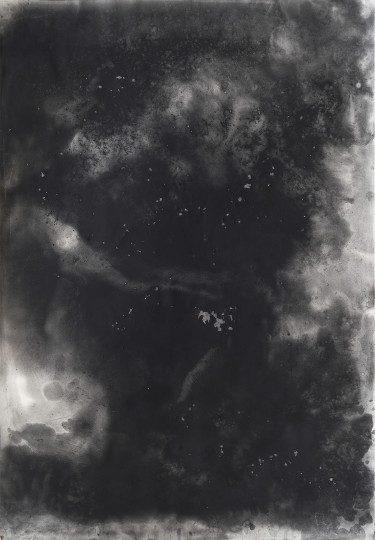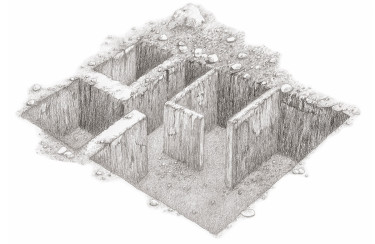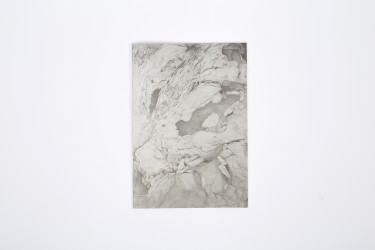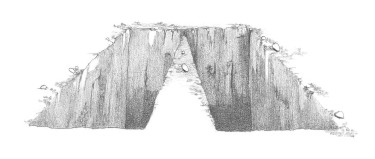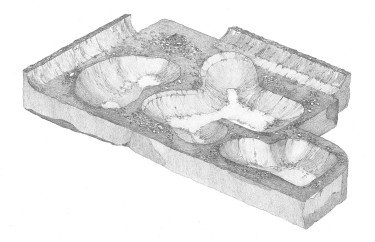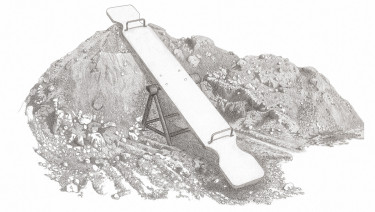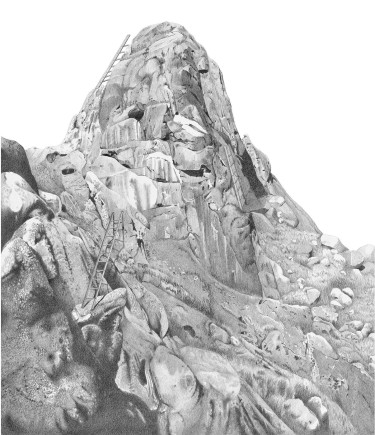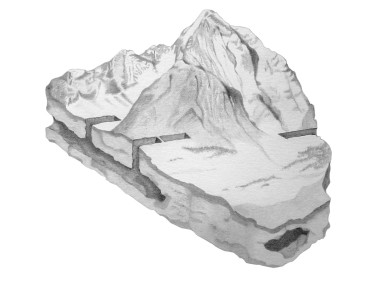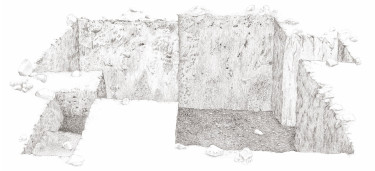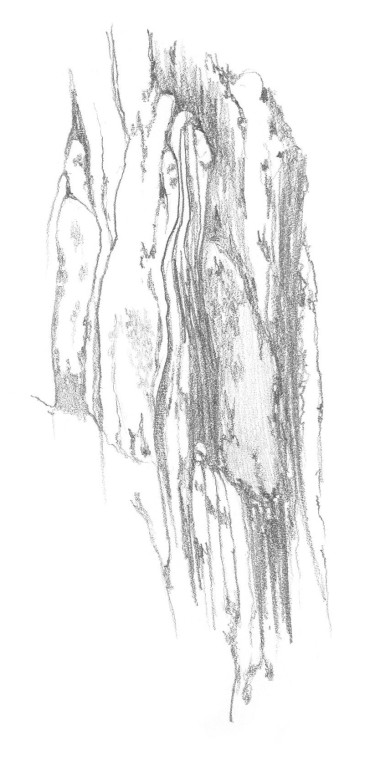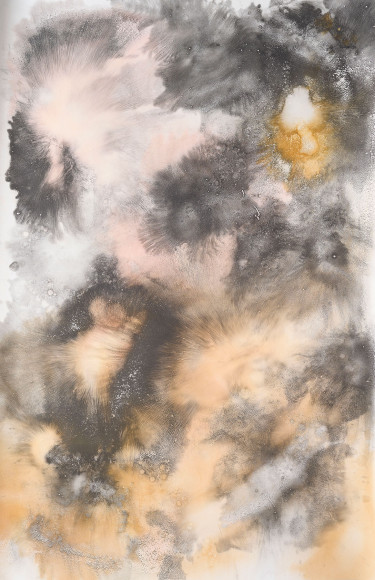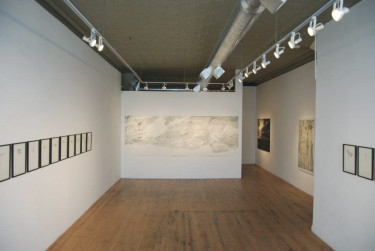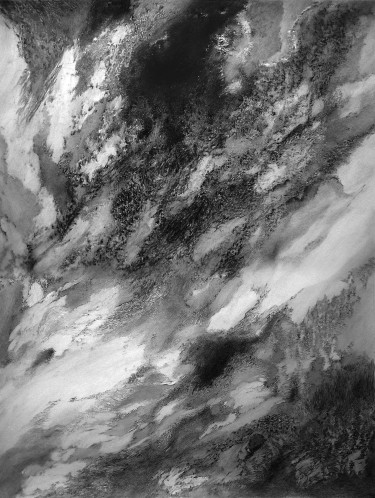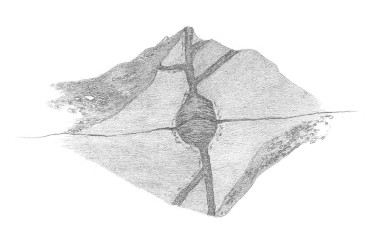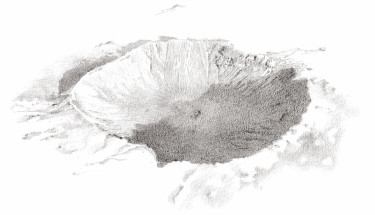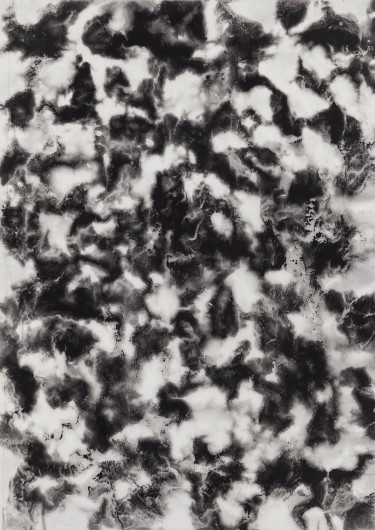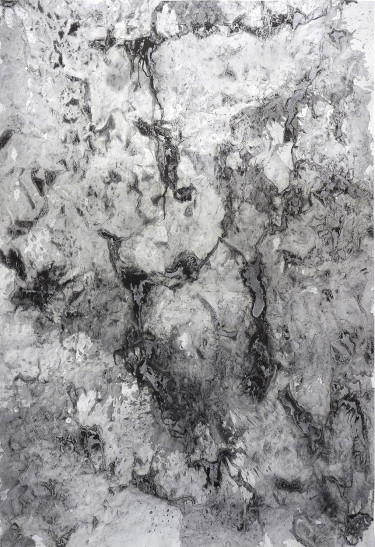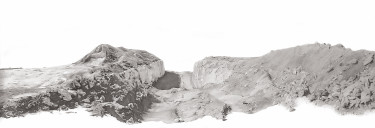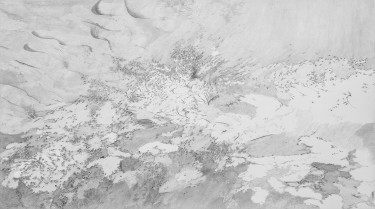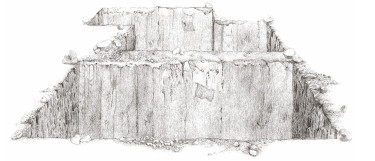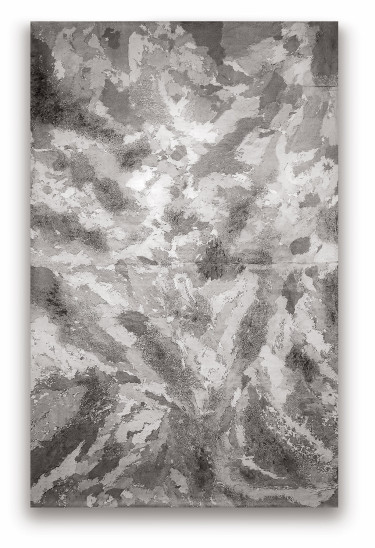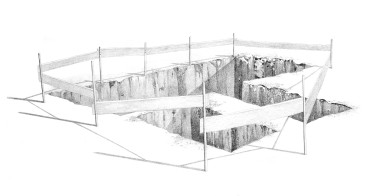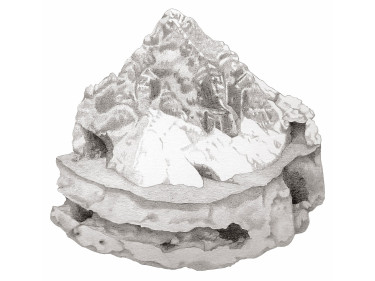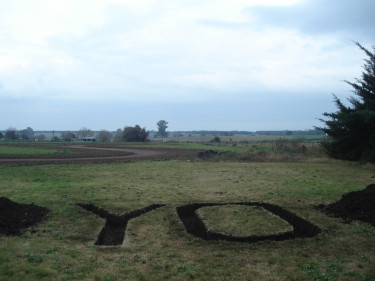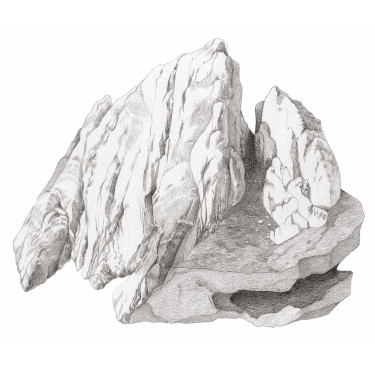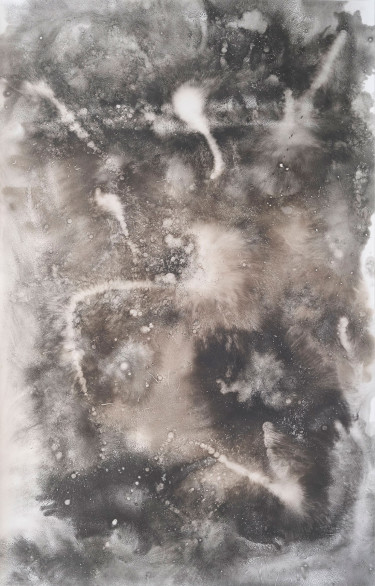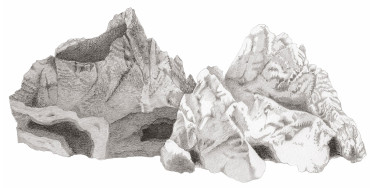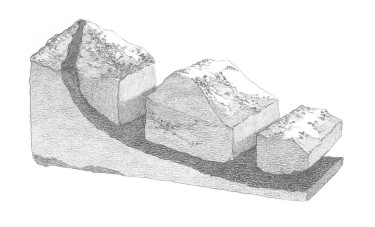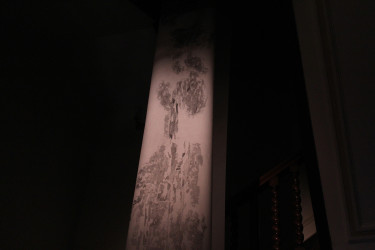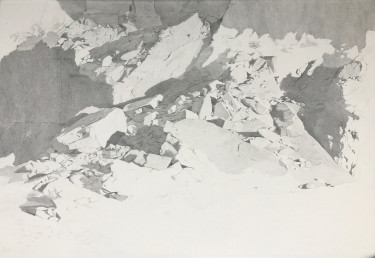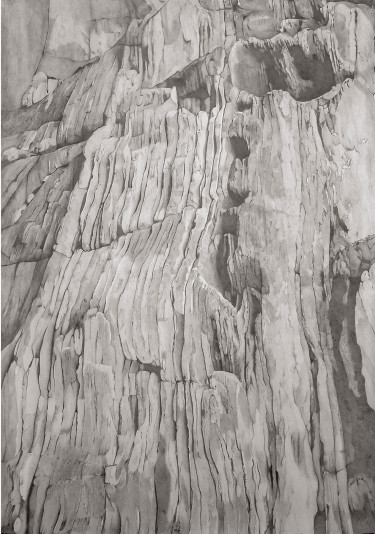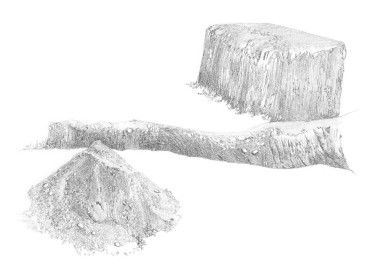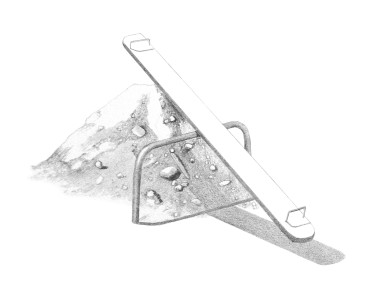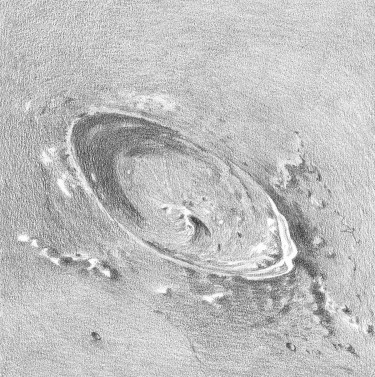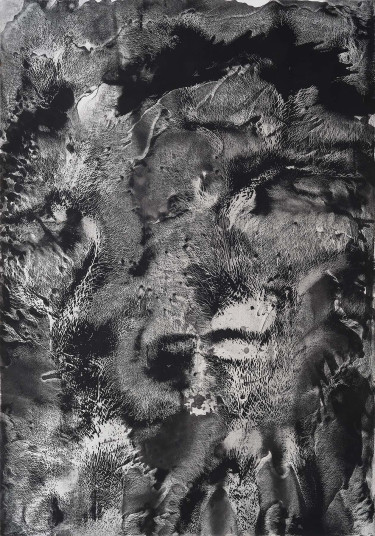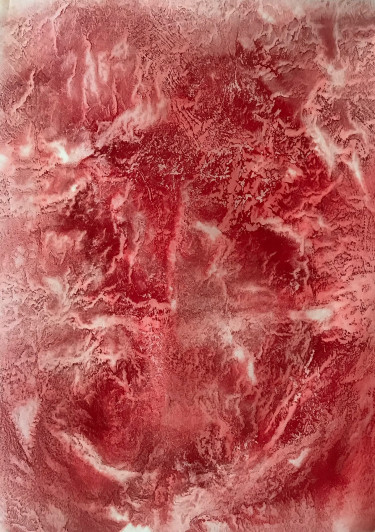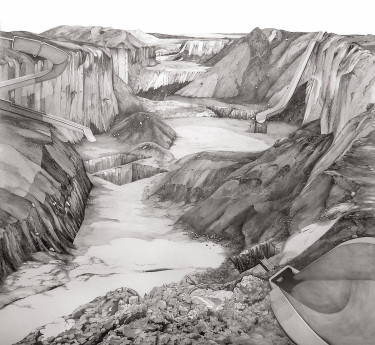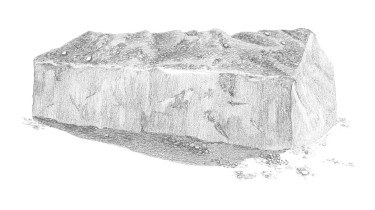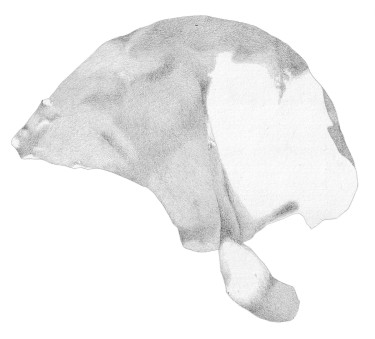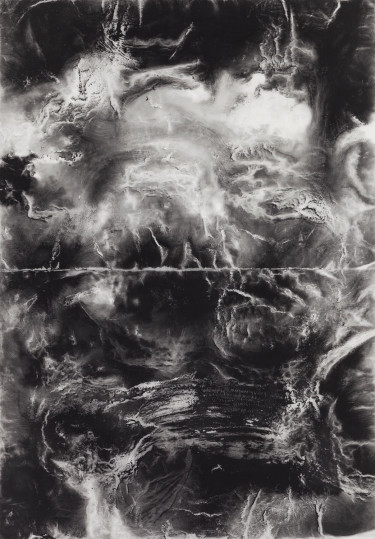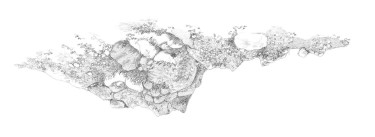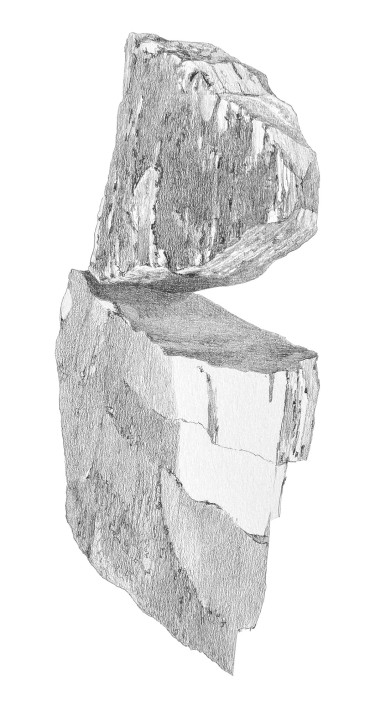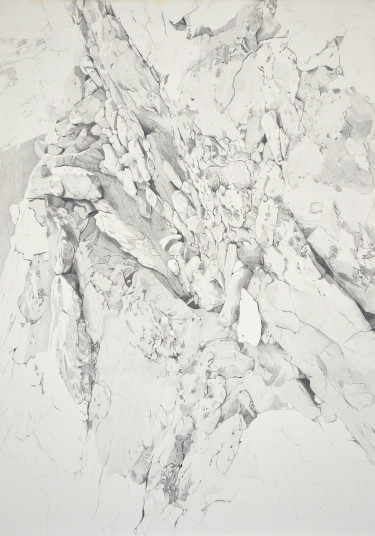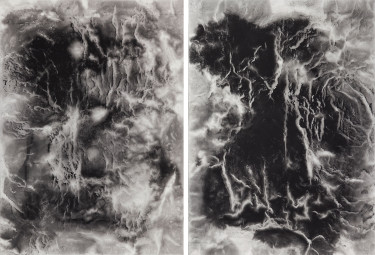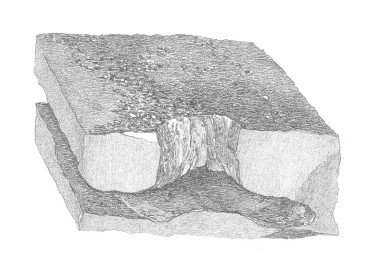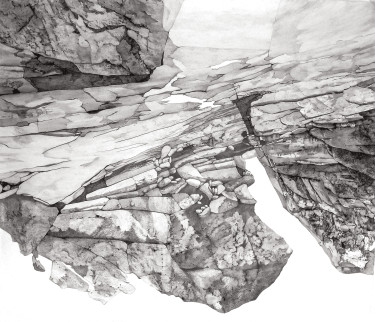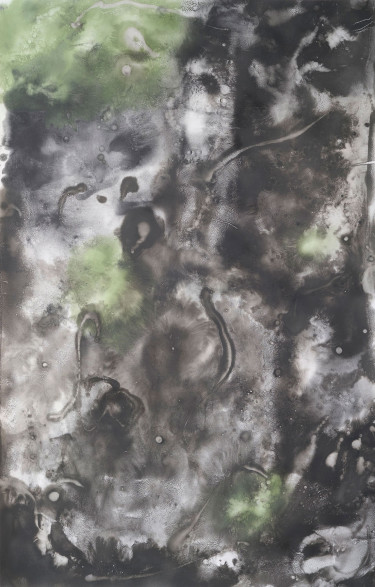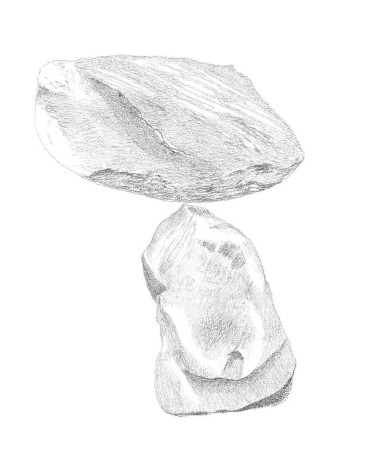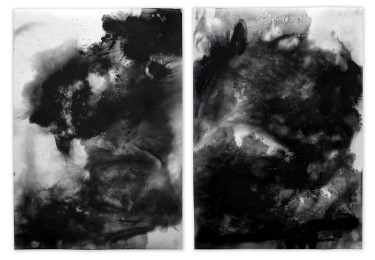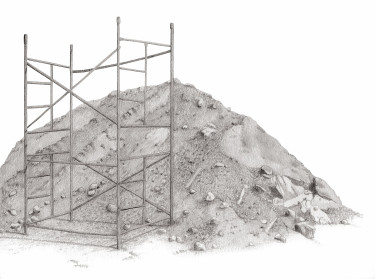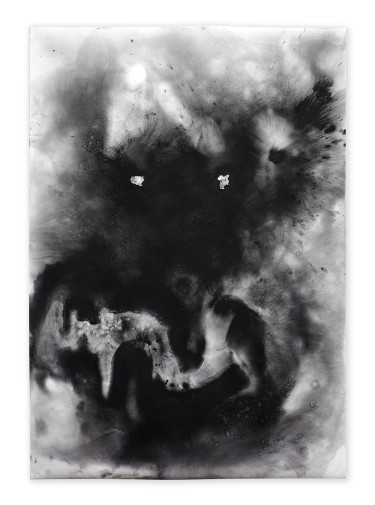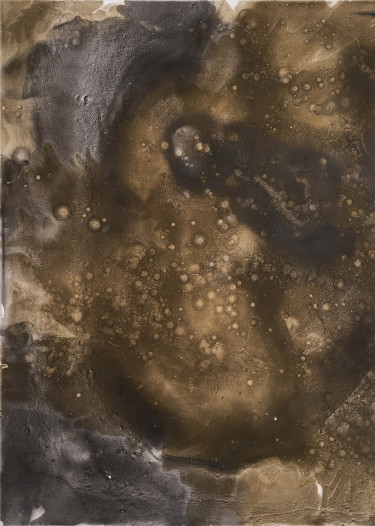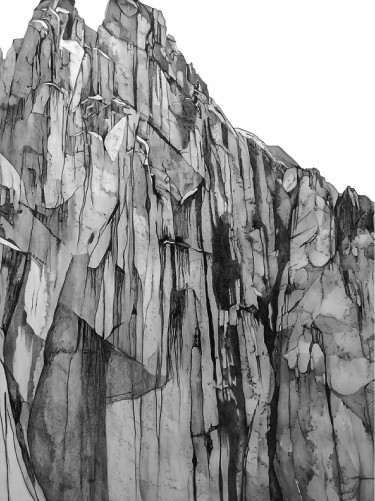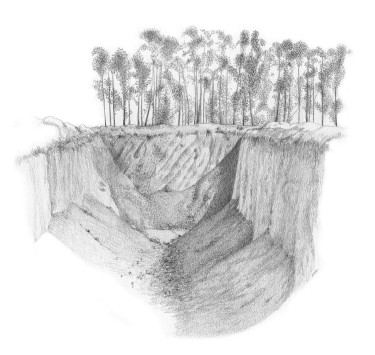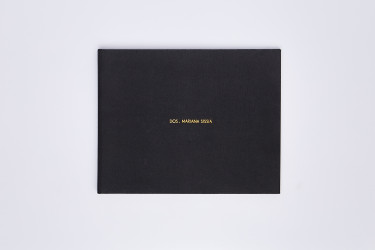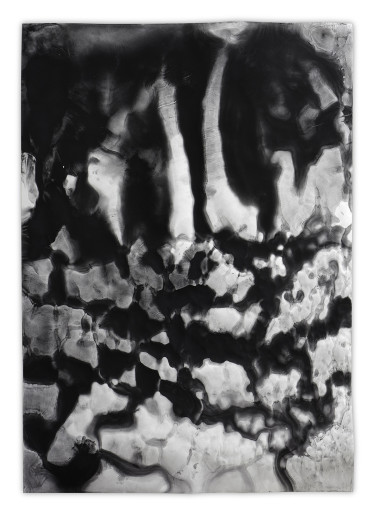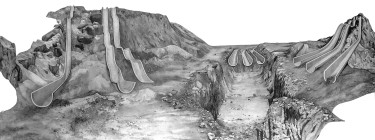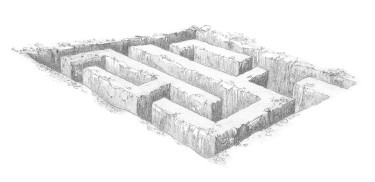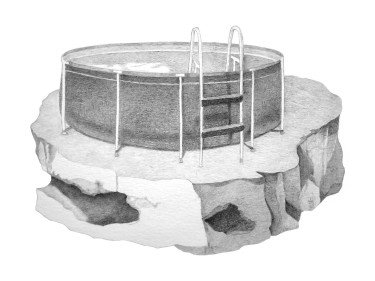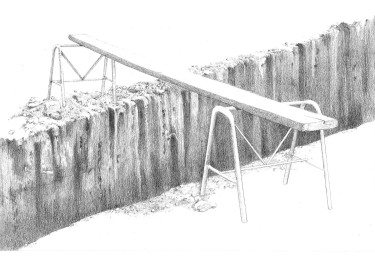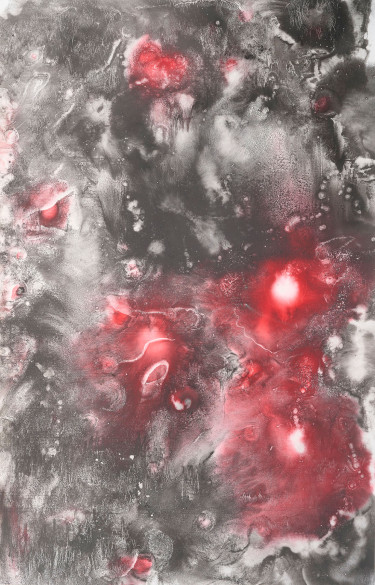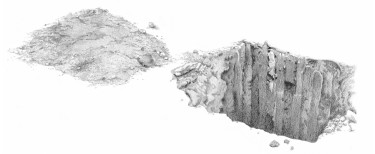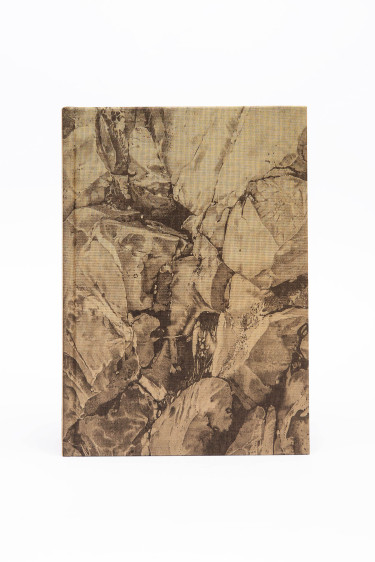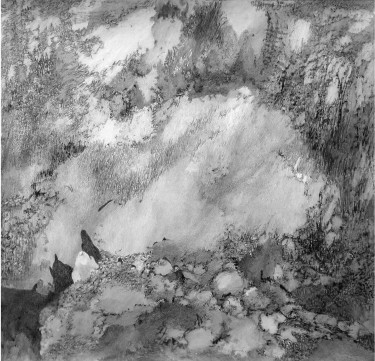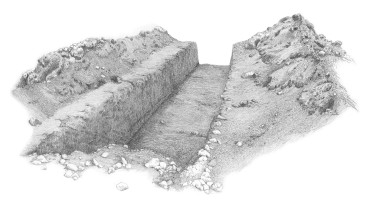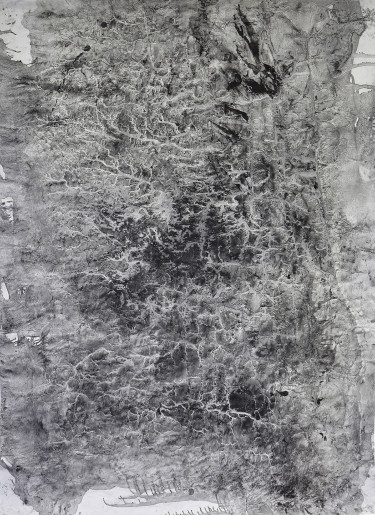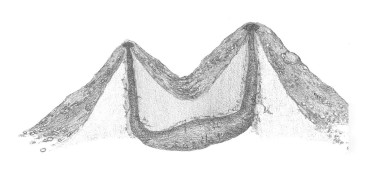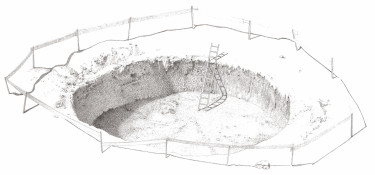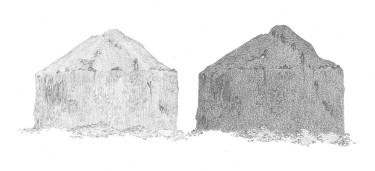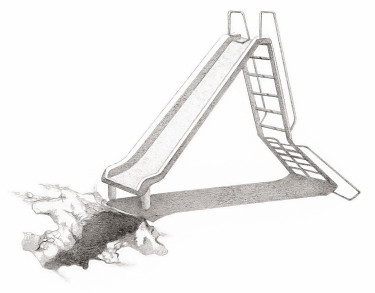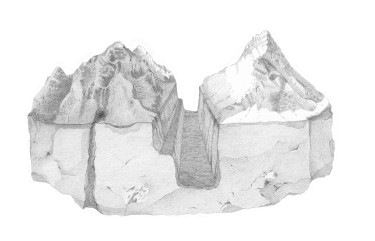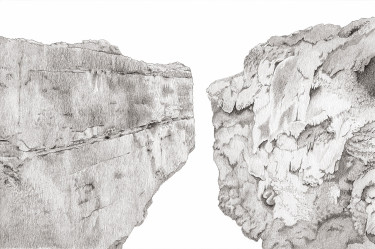Meditated matter
By
Eduardo Stupía
The visually delivered message plays on our experience and imagination with all the power of a verbal language, arousing feelings and thoughts, memories and fantasy, and releasing stores of mental energy. In our personal encounter with painting, there may be no need to translate this language into any other, no need to transform visual images into words. The visual image is a self-sufficient reality which verbal translation can do no better than very crudely approximate.
Jerome Silbergeld, Chinese Painting Style, University of Wash- ington Press, 1982.
Earthly materials, as soon as they are grasped by curious and brave hand, awaken our drive to work them over.
Gastón Bachelard, La tierra y las ensoñaciones del reposo, Fondo de Cultura Económica, 2006. (English title: The Earth and Reveries of Repose.)
I
The first drawing by Mariana Sissia that I ever saw showed an excavation, a seemingly deep pit, faithfully represented on the plane—that is, in the ground—at the end of a diagonal axis. Placed at a slight remove from the pit, just a little higher and to the left, was a perfectly rendered mound of earth produced by the act of digging. Beyond its quality —more remarkable still considering the young age of its author— the drawing was striking in that the natural direction of its reading seemed to go against the completed act of digging. A tension seemed to pull the earth into the pit, as if a tacit force called the earth to fill the hole back up—an effect heightened by the weight of the pit in the composition. This kinetic induction established a connection with the paradoxes of representation. Early on, then, Sissia was reflecting on the dilemmas of her métier, in terms of both the construction of the image and of the active exercise of drawing, in the form of a concealed allegory or as an intentional metaphor.
Like other scenes by Sissia akin in constitution or poetics, this excavation seemed to suggest a conception of drawing as a painstaking and radically physical task operated on a surface. One advances in the drawing by grinding the material on that first outer layer, searching for a less explored hidden plane; sediment is left along the way as part of the same phenomenon, of the same figure, which is not only a specific formal presence but also an instance of visual rhetoric. A sediment that threatens at times to obstruct or to drown visibility, the breath of what has been revealed.
That drawing astonished me due not only to its specific virtues, but also because it stood out from various works on paper by other young artists —as young as Mariana herself— also featured in the group show where I saw the work. Sissia’s style and graphic approach were even more striking in a wider context —the year was 2010— marked by less and less probity, wisdom, and mastery in the craft of drawing and by an endless number of faltering, rudimentary, unlearned proposals, some of them deliberately clumsy and crude. Sissia’s work was grounded in a completely different philosophy of action, one explicitly dedicated to the vocation of drawing for the sake of expressive and practical ends almost demented in the orthodoxy of their approach to the tool; she seemed to have something like pious devotion to an unwaveringly uniform and endlessly rich line and tone. And that which was so arresting at that time has continued to be one of her distinctive traits; it has not shifted or faltered since that early moment, despite various stages in her production.
II
During that same period, Sissia focused on a specific set of scenes, making use of recognizable elements like water tanks, above-ground swimming pools, scaffolding, and groups of trees generally placed on blocks or large clods of ground or floating intact on the plane. They seemed to make reference to the instructive rhetoric of technical or industrial manuals in a gesture somewhere between surreal estrangement and a kind of improvised metaphysical synthesis. Some of these works proposed other variations on the gathering of ground without the aid of any accessory.
A theatrical quality, dramatic tone, and concordance of other logics both progressive and destructive makes itself felt in these works with their cuts and gaps, their bite marks and plates, their rocky slopes and smooth segments, which the titles identify as tunnels, caves, caverns, walls. The artist moves skillfully between fantastical feints, insinuations, and resonances, and we suddenly have the sense we are before a protoscientific document intended to illustrate the architecture of anthills or termites’ nests; we have the unsettling feeling that we are examining animals’ dens or caves or exploring an inventory of construction sites, an engineer’s notebook.
The polysemy and breadth of Sissia’s method and procedure is striking. It partakes strategically of the iconography of geology and of the speleological universe, as well as simulacra of transcriptions of archeological field notes that she recreates in, for instance, a chain of references to public installations as contemporary as skateboard parks, their tracks here turned into dried fossil remains. As they plunge into the rugged ground, these even pits and ditches are steeped in duplicity, armed with a certain objective rationality, but also infused in the dizziness of the bizarre, as if the hidden life of a concealed underworld quivered within that illusory earth.
At the same time, one has the distinct impression that the one who makes these drawings does so knowing full well that her steadfast affirmation of certain figurations or contents, her use of motifs like intact or lacerated rock, perforated or solid ground, are an analogy for the endless penetration of drawing in the drawing itself, suspecting —or knowing— that man can dig in rock, but all he will ever find is the rocky. (Ibid)
The will to look inside of things makes vision sharp and piercing. It turns vision into violence as it discovers the fracture, the crack, the gap through which the secret of hidden things can be violated. (Ibid)
III
With clarity and surgical precision, absolute mastery of technique, vast attention to detail and enormous productive capability, Sissia’s drawing rummages in its own expanded body. Year after year, she hones her instruments and resources tirelessly. Steadfast, she trains the subtle muscle of her sensitive repertoire, adding elliptical alterations and transfigured correspondences. In a single but twofold act, she combines legible access and uncertainty. Her frictionless formula risks with almost naturalist fluidity the synthetic incrustation of foreign agents in worn mounds and terrains. It is in this form that slides and other items from playgrounds, ladders, drains, fences, and makeshift bridges come before us and justify their role as ghostly props. In this period of her production, like its later regions, Sissia’s comprehensive elaboration of drawing depends strictly on her thorough control of the strokes —lines in, evolutions, landscapes, fillings, degrees of pressure— with the pencil or graphite bar on paper. Her treatment is geared to sustaining the dense substantiality and seamless corporealness of the planes that make up her large objects and structures. She worked for a spell on sheets of paper with plastered surfaces though the grain does not interrupt the drawing’s optical disposition. Equally effectively, she would later make the porous and somewhat coarse support intervene in the drawing as a new and suggestive textural sign.
In relation to the spirit that seems to move them, though, the sharp earthy incisions and even depressions suggest precarious and primitive handiwork as well as a greater economy of means now on an industrial or project scale. Both hypotheses converge in the geometric regularity of the line in architectural blueprints, compromisingly rendered abysses while soothing foundations become orthogonal collapses in the earth’s crust. With chilling coldness, a grave appears as well as part of what might be a reference to a virtual catalogue of the cultured uses of the earth.
Everything serves to further unlikely anecdotes and mild tensions. The human factor is an absent presence, and empty city lots with melancholic waste are fanatically displayed to the torrid whiteness of a plane that is territory and space as well as negative force. What stands out in this singular mix is the brutal excision, the wide and square scar that Sissia calls Trinchera [Trench]. It takes shape at the center of energetic gravity of one of the many remarkable series in the course of her prolific production.
The sense of uneasiness, of an improper use of gadgets as steeped in connotation as they are dated and, therefore, useless —stuck as they are in the perpetual present of the anonymous scenes of excavation and unearthing— makes time a farcical presence; the irony of a use of time that is cultural and social, but also an anachronistic nightmare. Once subject to vital actions and movements, the situation and its parts are now frozen forever and, like a collection of urban fetishes, artificially placed on a neutral background.
IV
Though resolute, the systematic change of course that Sissia begins to effect makes itself felt gradually. It entails a radical change in perspective and in the design and use of the spatial vraisemblance. Sissia will hover over craters and depict hillsides, summits, crags, and mountainous peaks as she wavers between mimesis and imaginary invention. In the smallest details of these disruptions in the land lurks the resounding transition that would irrupt in the overall conception of her project and lead her language to take root at a fruitful threshold. She will now begin to skillfully depict collapsing chalky walls, rugged peaks, and canyons and to manipulate counterpoints and combinations of networks, linear weaves, and gradations of gray embedded in evanescent layers of graphic epidermis. These deceptions exist in a limbo of sheer appearance and, hence, can be seen as organic abstractions or as a sort of solid wall that becomes diaphanous suddenly, its physiognomy unstable and shades changing. More than ever, the artist works on the basis of antagonistic structural premises as expansive as they are muddled as they encroach on the entire visual field like a pan shot. These works look like unknown cartographies, boundless aerial views of a conjectural plateau or, in more terminal manifestations, lush camouflages.
The vigorous making of these works does, in fact, attempt to emphasize, albeit gradually, the grain in the tenuous vibration of the stroke on the paper or to hide it by threading together, at an intimate and steady pace, the nodules, lumps, and cells yielded by the endless workings of the pencil. The thickness, weight, and varying coarseness of the support silently bind together the whole. After all, Sissia is suspicious of anything that might be seen as a shortcut or as a facile and flashy effect. Startlingly, in these works accents, contrasts, and emphases rendered by means of frottage appear as well, orchestrated in the ecology of the whole with an inalterable organic quality.
We should linger further on how Sissia crosses that vast terra incognita which, like an expert explorer, she has discovered, armed with pencils of varying gradation and with graphite wielded like arrowheads, sharp vehicles to supply a much needed dose of options and registers. There is no room in drawing —or, rather, in Mariana Sissia’s act of drawing— for turning back or for correction. Her approach is always head on as she leaps into the void without flashy acrobatics, embracing instead the challenge of constancy that affords no hesitation or scars regardless of how many precautions and decisions she may have made on how to give shape to each individual work. Sissia interrogates the appropriations, adjustments, consistencies, couplings, and dissonance of drawing, rendering with virtuosic stubbornness generative, rough, and ashy dots, segments, lines, rays, and tiny scribblings to form constellations with changing skin that can be read in turn as conjectural depth, sky, earth, pond, map, hydrographic basin, maze, wall. Her recent works go beyond that initial allure and enchantment to cross the frontier of her own ontological threshold, at once representative fiction and informalist project. The various formats of the support are shattered into extreme instances in, for instance, the magnificent and landscape -like panorama made from horizontal pieces assembled in a contingent sequence like the semicircular mirage of Claude Monet’s Nymphéas or an abstract version of the Buddhist narrative scrolls that reached China from India. Similarly, the long vertical scrolls of rice paper redistribute her work and provide another reading of the image perceived as a dissected dynamic whole rather than as a mere link on a chain. All of this entails not only a new Eastern perspective, but also a redoubled determination to test out and to experiment in terms of the internal and external dematerializations and the installation -like environmental variations these works propose.
V
The notion of graspable and real time is accentuated on the cognitive level by the remarkable oneness that Sissia manages to achieve despite the radical heterogeneity of the scenes she depicts and the evident material density in each and every work. We have a sense of hours and hours spent on methodic and taxing toil, slow and demanding work that requires full attention, awareness, and motor skill. This can only be achieved by an artist well trained in navigating the relationship between creative drive, manual perfectionism, and profound subjective alertness —all of which Sissia brings together in a systematic and meditative practice. An encounter, a tension, a struggle of thicknesses and substances that ensues between the interior productive forces of the Homo faber and the limits of the expectant material. It is the resistance, the hostility of matter (Ibid) that must be brought out into the world and shaped. Inert, it is steadfastly fleeting, straining, and evading the very one who would give it origin, breath, vitality, and sensation. Sensitive avatars, amorous conflicts, sacrifices and discoveries experienced by those who, like Mariana Sissia, give themselves over to the all-encompassing monastic rite of meditated matter (Ibid) which, for her, goes beyond matter at the service of art.
With such wrath imagination seeks to explore matter! All great human efforts, even when they are external in form, are harbored in intimacy. (Ibid)
